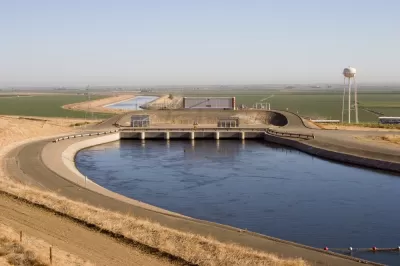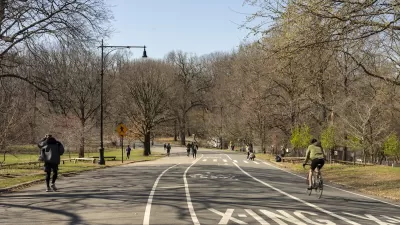The declaration applies to all of California's 58 counties, with agencies and households urged to implement stricter conservation measures as the historic drought deepens.

Declaring a statewide drought emergency on Tuesday, Governor Gavin Newsom urged Californians to redouble their efforts to conserve water "[a]s the western U.S. faces a potential third year of drought." Ian James reports that "[t]he declaration came as state water officials announced that Californians had cut their water usage by 5% in August, a modest improvement over July, when water use decreased by 1.8%." The governor's proclamation allows the State Water Resources Control Board to potentially "adopt emergency regulations to prohibit wasting water, such as hosing down sidewalks or driveways, allowing drinking water to flood gutters or streets, or washing a car without a shut-off nozzle."
While most of California was already under a state of drought emergency, "Newsom’s proclamation added the last eight remaining counties, and further bolstered his call for everyone to voluntary reduce water use by 15%." The state faces a growing "moisture deficit," and "an estimated 140% of average statewide precipitation would be needed in the coming year to achieve average statewide runoff."
The board of directors for Metropolitan Water District of Southern California—a region that is home to more than half of the state's population—"will consider next month whether to urge member water agencies across Southern California 'to implement mandatory conservation in their communities, as outlined in their water shortage contingency plans.'"
In addition to saving water, a report found that "improving water-use efficiency in urban areas offers the greatest potential for reducing water-related energy use and emissions that contribute to global warming."
FULL STORY: Newsom declares statewide drought emergency, urges California to conserve water

Study: Maui’s Plan to Convert Vacation Rentals to Long-Term Housing Could Cause Nearly $1 Billion Economic Loss
The plan would reduce visitor accommodation by 25,% resulting in 1,900 jobs lost.

North Texas Transit Leaders Tout Benefits of TOD for Growing Region
At a summit focused on transit-oriented development, policymakers discussed how North Texas’ expanded light rail system can serve as a tool for economic growth.

Why Should We Subsidize Public Transportation?
Many public transit agencies face financial stress due to rising costs, declining fare revenue, and declining subsidies. Transit advocates must provide a strong business case for increasing public transit funding.

A Visual Celebration of Manhattan’s Chinatown Elder Community, Through Food
Lanterns, cafeteria trays, and community connection take center stage in this stunning photo essay.

How to Make US Trains Faster
Changes to boarding platforms and a switch to electric trains could improve U.S. passenger rail service without the added cost of high-speed rail.

Columbia’s Revitalized ‘Loop’ Is a Hub for Local Entrepreneurs
A focus on small businesses is helping a commercial corridor in Columbia, Missouri thrive.
Urban Design for Planners 1: Software Tools
This six-course series explores essential urban design concepts using open source software and equips planners with the tools they need to participate fully in the urban design process.
Planning for Universal Design
Learn the tools for implementing Universal Design in planning regulations.
City of Santa Clarita
Ascent Environmental
Institute for Housing and Urban Development Studies (IHS)
City of Grandview
Harvard GSD Executive Education
Toledo-Lucas County Plan Commissions
Salt Lake City
NYU Wagner Graduate School of Public Service





























